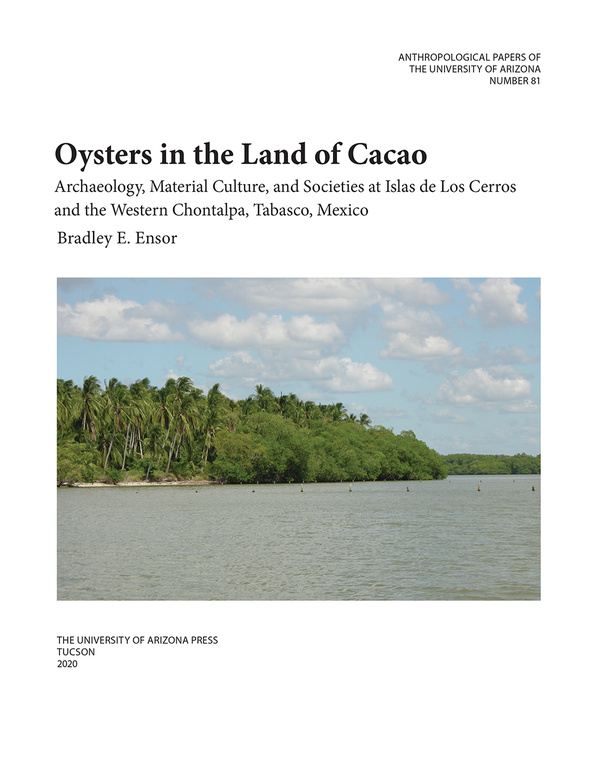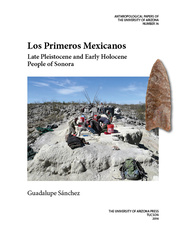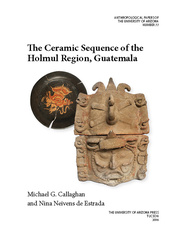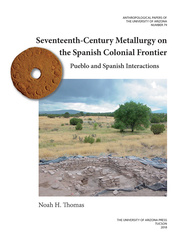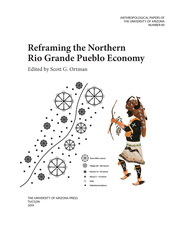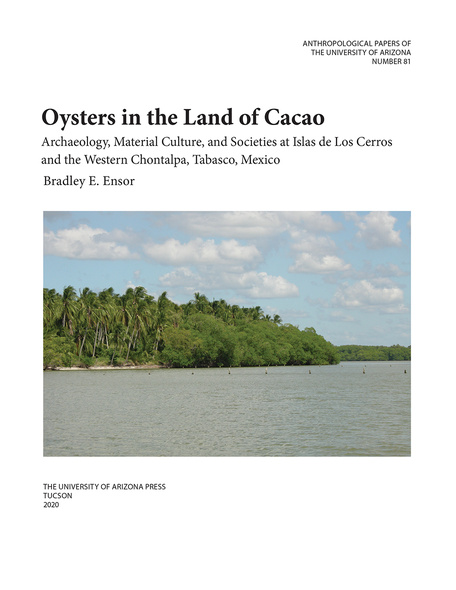
248 pages, 8 1/2 x 11
44 b&w illustrations, 43 tables
Paperback
Release Date:01 Sep 2020
ISBN:9780816541089
Oysters in the Land of Cacao
Archaeology, Material Culture, and Societies at Islas de Los Cerros and the Western Chontalpa, Tabasco, Mexico
SERIES:
The University of Arizona Press
For decades, the Chontalpa region of Tabasco, Mexico, conjured images of the possible origins of the Itzá, who migrated, conquered, or otherwise influenced much of Mesoamerica. In Oysters in the Land of Cacao, archaeologist Bradley E. Ensor provides an important resource for Mesoamerican Gulf Coast archaeology by offering a new and detailed picture of the coastal sites vital to understanding regional interactions and social dynamics.
This book synthesizes data from multiyear investigations at a coastal site complex in Tabasco—Islas de Los Cerros (ILC)—providing the first modern, systematic descriptions and analyses of material culture that challenge preconceptions while enabling new perspectives on cultural developments from the Formative to Late Classic periods through the lens of regional comparisons and contemporary theoretical trends. Ensor introduces a political ecological understanding of the environment and archaeological features, overturns a misconception that the latter were formative shell middens, provides an alternative pottery classification more appropriate for the materials and for contemporary theory, and introduces new approaches for addressing formation processes and settlement history.
Building on the empirical analyses and discussions of problems in Mesoamerican archaeology, this book contributes new approaches to practice and agency perspectives, holistically integrating intra- and interclass agency, kinship strategies, gender and age dynamics, layered cultural identities, landscapes, social memory, and foodways and feasting. Oysters in the Land of Cacao addresses issues important to coastal archaeology within and beyond Mesoamerica. It delivers an overdue regional synthesis and new observations on settlement patterns, elite power, and political economies.
This book synthesizes data from multiyear investigations at a coastal site complex in Tabasco—Islas de Los Cerros (ILC)—providing the first modern, systematic descriptions and analyses of material culture that challenge preconceptions while enabling new perspectives on cultural developments from the Formative to Late Classic periods through the lens of regional comparisons and contemporary theoretical trends. Ensor introduces a political ecological understanding of the environment and archaeological features, overturns a misconception that the latter were formative shell middens, provides an alternative pottery classification more appropriate for the materials and for contemporary theory, and introduces new approaches for addressing formation processes and settlement history.
Building on the empirical analyses and discussions of problems in Mesoamerican archaeology, this book contributes new approaches to practice and agency perspectives, holistically integrating intra- and interclass agency, kinship strategies, gender and age dynamics, layered cultural identities, landscapes, social memory, and foodways and feasting. Oysters in the Land of Cacao addresses issues important to coastal archaeology within and beyond Mesoamerica. It delivers an overdue regional synthesis and new observations on settlement patterns, elite power, and political economies.
Ensor summarizes two decades of innovative archaeological research on the small, nonagricultural communities around the Laguna de Mecoacan some ten miles north of the Late Classic Maya kingdom of Comalcalco. His research is a significant contribution to the understanding of this Maya kingdom. These communities were integrated into the Comalcalco polity as tributaries supplying the primate center with crushed shell and lime for the construction of elite residences and temples. Ensor further disproves the hypothesis that these small coastal communities were ‘ports of trade,’ suggesting that long-distance and regional trade in the area was controlled directly from the Comalcalco primate center. He further summarizes the Late Formative and Late Classic sociopolitical history of western Tabasco. His conclusions and speculations should stimulate further research and discussion of this crucial intermediate area.’—Edward B. Sisson, University of Mississippi
Bradley E. Ensor is a professor at Eastern Michigan University and author of The Archaeology of Kinship and Crafting Prehispanic Maya Kinship.
1. Introduction
2. The Islas de Los Cerros Archaeological Project
3. Environment and Political Ecology
4. The Sites
5. The Features
6. Pottery
7. Other Artifacts and Mater
8. The Formative Periods
9. The Late Classic Period
References Cited
Index
Abstract

